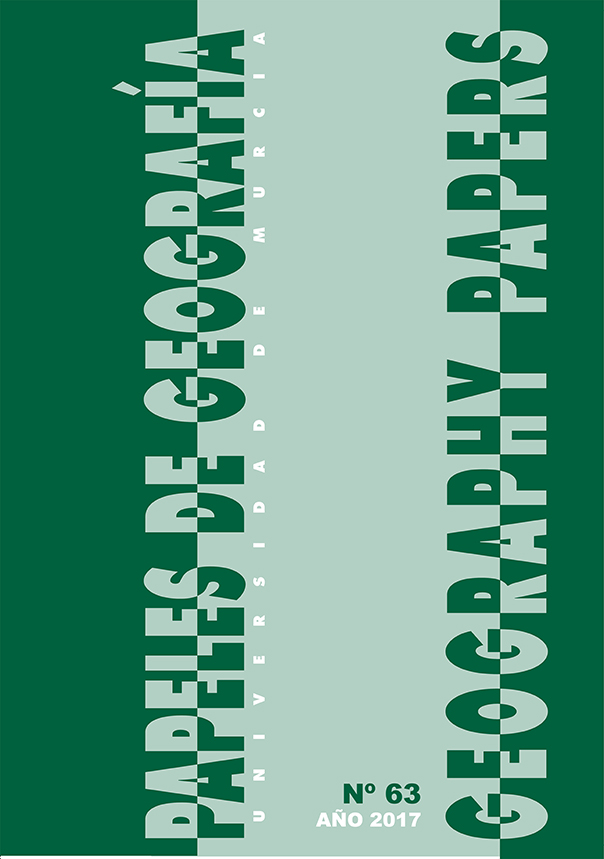Integration of gis and multicritorial hierarchical analysis for aid in urban planning: Case study of khemisset province, Morocco
Resumen
The present in a process is a reflection of the understanding of the process that enriches the programming of land resources for urbanization. To make the presentation of Model Objective no, I combined June Invoke on the use of the hierarchical method Multicriteria Analysis (AHP) and Geographical Information Systems (GIS). The relevance of the Adopting Process WATCH To solve the complex problems of spatial interpreter. Associate Determination of Other Criteria Discounted Objectives and Attributed Data Map Scale and Geographical Province of Khémisset Indicators of Them and You Hierarchy Allowed in Ontario Identified EVALUATE Quantitatively COMPARATOR OF OFFICE DESIGN OF DIFFERENT STORES Phenomenon SCENARIOS of study of the perimeter of the zones. This quantization is spatialised simulation obtained across and aggregating data following the multicriterion approach of the AHP crossover and weighted sum (WSM) method. Modeling the way factors weights them according to the respective participative. Process Also I adopt the possibility of the use of the atlas depenter available south of the ground For the OFFICER AND SPECIALISTS of the south assistant the choice of urbanization of destination of the vocation urbanistic of the grounds: AND FOR Urbanization to zones Preserve UO to Open to save.
Descargas
-
Resumen421
-
PDF5247
-
PDF 5247
Citas
BEN MENA, S. (2000): Introduction aux méthodes multicritères d’aide à la décision. Biotechnol, Agron. Soc. Environ. 4 (2), p. 83–93.
BRANS, J. P. et MARESHAL, B. (2002): Prométhée-Gaia, Une méthodologie d'aide à la décision en présence de critères multiples, Éditions de l'Université de Bruxelles.
CHTOUKI, H. (2011) : La planification urbaine au Maroc : État des lieux et perspectives. FIG Working Week 2011 Bridging the Gap Between Cultures Marrakech, Morocco, 18-22.
EL MORJANI, Z. (2002) : Conception d’un système d’information à référence spatiale pour la gestion environnementale ; application à la sélection de sites potentiels de stockage de déchets ménagers et industriels en région semi-aride (Souss, Maroc). Thèse de doctorat, université de Genève. Terre et Environnement Vol. 42, 300 p.
FIGUEIREDO, R.F. (2001): Modélisation cartographique en environnement SIG pour l’aide à la prise de décision: application à l'étude des effets potentiels des utilisations des terres dans le secteur nord du Massif Marginal Coimbra. Éditions de Université de Coimbra. 204p.
FUMEY, M. (2001): Méthode d'évaluation des risques agrégés: application au choix des investissements de renouvellement d'installations, Thèse de doctorat, Ecole des Mines d'Albi-Carmaux, Institut Polytechnique, Toulouse.
HAMDADOUD, D. et BOUAMRANE, K. (2007): Un système d’aide à la décision en aménagement du territoire, une approche multicritère et une approche de négociation, Thèse de doctorat université d’Oran.
HENRIET, L. (2000): Systèmes d'évaluation et de classification multicritères pour l'aide à la décision: Construction de modèles et procédures d'affectation, Thèse de doctorat, Université Paris Dauphine.
LAARIBI, A. et al. (1996): Systèmes d’information géographique et analyse multicritère: Intégration pour l’aide à la décision à référence spatiale. PhD thèses, Université Laval, Québec.
LE GALL, AC. (2009): Panorama des méthodes d’analyse multicritère, INERIS, Paris.
MAMMERI, ML. (2013): Une approche d’aide multicritère `a la décision pour l’évaluation du confort dans les trains: construction d’un modèle d’évaluation. Université Paris Dauphine - Paris IX.
MARINONI, O. (2005) A stochastic spatial decision support system based on PROMETHEE. International Journal of Geographical Information Science, 19(1): 51–68.
MARTIN, B.; ST-ONGE, et WAAUB, J.P. (2003): An integrated decision aid system for the development of Saint-Charles River’s alluvial plain, Québec, Canada. International Journal of Environmental Pollution, 12 : 264–279.
ROY, B. et BOUYSSOU, D. (1993): Aide Multicritère à la Décision: Méthode et Cas, Economica, Collection Gestion; Série: Production et Techniques Quantitatives appliquées à la gestion, Paris.
ROY, B. (1985): Méthodologie multicritère d’aide à la décision. Paris : Economica, XXII - 423p.
SAATY, T.L. (977) A scaling method for priorities in hierarchical structures, Journal of Mathematical Psycology, N°15, pp. 234-281.
SAATY, T.L. (1980): The Analytic Hierarchy Process. McGraw-Hill, New York, USA.
SALOMON, V. A. P. (2001): A compilation of comparisons on the analytic hierarchy process and others multiple criteria decision making methods: some cases developed in Brazil, 6th ISAHP, 2-4 août 2001, Berne, Switzerland, p. 413-420.
SIMON, H.A. (1960): The New Science of Management Decision. Harper and Row, New York.
TSOUKIÀS, A. (1990): From decision theory to decision aiding methodology. European Journal of Operational Research, 187(1):138–161, 2008.
VINCKE, P. (1989): L'aide multicritère à la décision, Éditions de l'Université de Bruxelles.
Las obras que se publican en esta revista están sujetas a los siguientes términos:
1. El Servicio de Publicaciones de la Universidad de Murcia (la editorial) conserva los derechos patrimoniales (copyright) de las obras publicadas, y favorece y permite la reutilización de las mismas bajo la licencia de uso indicada en el punto 2.
2. Las obras se publican en la edición electrónica de la revista bajo una licencia Creative Commons Reconocimiento-NoComercial 4.0 (texto legal). Se pueden copiar, usar, difundir, transmitir y exponer públicamente, siempre que: i) se cite la autoría y la fuente original de su publicación (revista, editorial y URL de la obra); ii) no se usen para fines comerciales; iii) se mencione la existencia y especificaciones de esta licencia de uso.
3. Condiciones de auto-archivo. Se permite y se anima a los autores a difundir electrónicamente las versiones pre-print (versión antes de ser evaluada) y/o post-print (versión evaluada y aceptada para su publicación) de sus obras antes de su publicación, ya que favorece su circulación y difusión más temprana y con ello un posible aumento en su citación y alcance entre la comunidad académica. Color RoMEO: verde.








